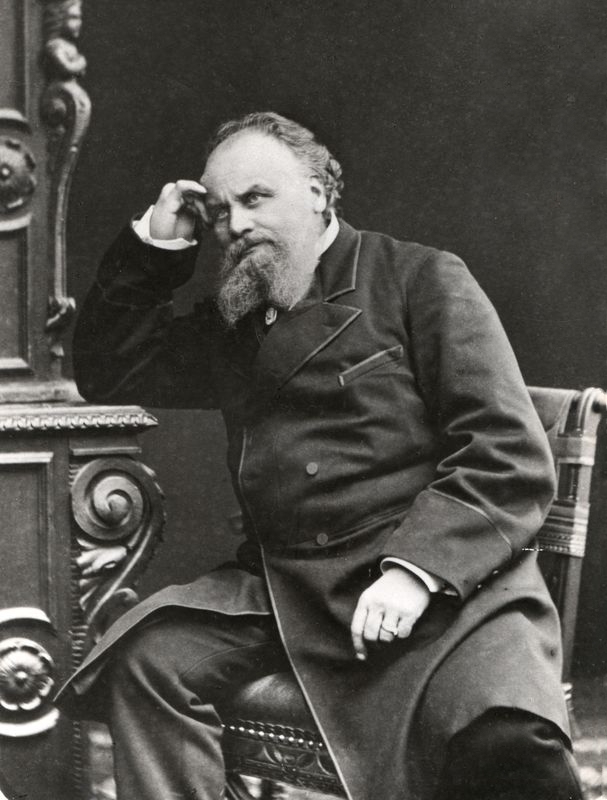Even though I’ve been living in Norway for a bit less than two years now, I’m still listening to french news and this morning I’ve been told about a new exhibit at the Museum of Decorative Arts. They talked about a man I’ve never heard about before… Aristide Boucicaut.
Now that I know a bit more about him, I think I need to talk a bit about his life and accomplishments, especially on his impact on modern marketing. Wanna know more?
Who was Aristide Boucicaut?
Aristide Boucicaut was born in 1810 in Bellême, France. His journey to becoming a retail magnate began modestly—as a humble peddler. His flair for commerce soon led him to Paris, where he joined the Petit Saint Thomas, a small shop that would be the precursor to his future endeavors. In 1852, Boucicaut took a significant leap by acquiring a share in a struggling textile store called Le Bon Marché. This decision marked the beginning of a new era in retail.

Under Boucicaut’s innovative leadership, Le Bon Marché was transformed from a modest shop into the world’s first department store. His revolutionary ideas changed the retail landscape forever. He introduced the concept of fixed prices, eliminating the common practice of haggling and making shopping more straightforward and accessible. This was a radical change that provided clarity and confidence for consumers, setting a new standard for transparency in transactions.

Boucicaut was also a pioneer in enhancing the shopping environment itself. He reimagined the store layout to encourage browsing and impulse buys, a tactic that modern retailers continue to use to great effect. The aisles of Le Bon Marché were designed to be inviting, with goods displayed openly instead of behind counters, allowing customers to touch and inspect products freely—a novel idea at the time.
Perhaps most notably, Aristide Boucicaut was an early advocate of the sales model that prioritized customer service and satisfaction. He implemented liberal return policies and even introduced money-back guarantees, securing customer trust and loyalty. These policies not only revolutionized retail but also laid the groundwork for customer service practices that are now standard.

Through his transformative vision for Le Bon Marché, Boucicaut not only changed how stores operated but also how they connected with their customers. His legacy is a testament to the power of innovative thinking and customer-centric strategies in the world of commerce.
Influence on modern marketing
As I was explaining it just before, Boucicaut was a visionary whose ideas have permeated the fabric of retail strategy and customer relations, shaping the way businesses operate to this very day. The echoes of his innovative spirit are especially noticeable in the design and operation of contemporary department stores and e-commerce platforms:

Boucicaut’s approach to customer service, which emphasized transparency and customer satisfaction, laid the foundational principles of modern marketing strategies. These include the importance of building trust with consumers through clear pricing and reliable service—practices that are now considered standard in the industry.
Moreover, Boucicaut’s innovative use of store layouts to enhance the shopping experience has influenced the architectural designs of today’s retail spaces. Modern stores continue to use layout strategies that encourage browsing and maximize customer engagement, principles that he championed as early as the mid-19th century. The ambiance of shopping environments, which he prioritized, is now critical in retail and is meticulously crafted to reflect brand identities and cater to consumer preferences.
His promotional strategies, such as elaborate window displays and the use of a mail-order catalog, have also had a lasting impact:

These methods have been adapted to current marketing channels, evolving into online display advertising and digital catalogs that leverage technology to reach a global audience. The principles of engaging visual merchandising and comprehensive product showcasing that Boucicaut developed are now amplified in the digital age, where visual impact and immediate information are key to capturing consumer interest.
I kept the most important to me for the end: Boucicaut’s concept of treating employees well, including offering them profit-sharing and benefits, prefigured today’s best practices in human resources. Companies now recognize that a satisfied and well-compensated workforce is essential to maintaining productivity and enhancing the customer experience, a testament to Boucicaut’s early recognition of employee welfare as integral to business success.
Learning more about the man made me feel that he deserves the title of the “father of modern marketing”. His visionary strategies and profound understanding of customer and employee satisfaction pioneered many of the foundational practices we see in today’s marketing and retail environments.
I invite you to check this video I found about “Le Bon Marche”:
Or else, if by chance you’re living or passing by Paris, I suggest you to visit the exposition (I’m not sure I’ll have the occasion myself, unfortunately): https://madparis.fr/La-naissance-des-grands-magasins-Mode-design-jouet-publicite-1852-1925

Comments